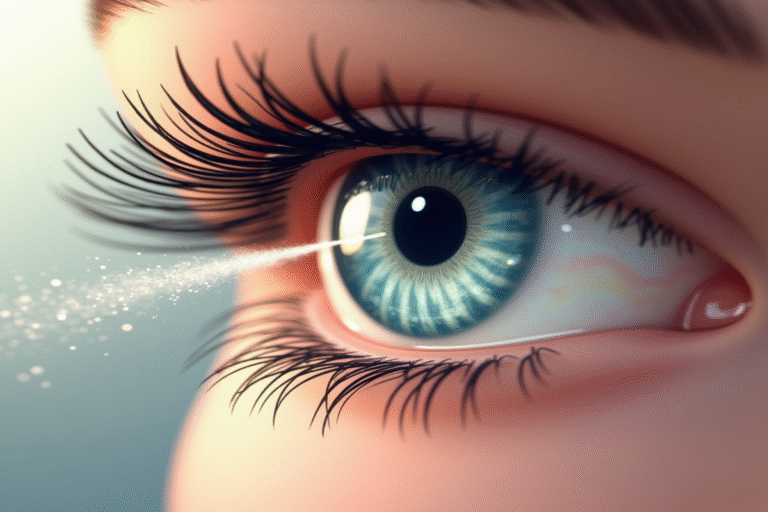Have you ever wondered why we have those delicate hairs framing our eyes? While eyelashes have become a beauty standard across many cultures, their primary purpose has nothing to do with aesthetics. These tiny hair-like structures are actually sophisticated biological guardians that protect one of our most vulnerable and valuable sensory organs.
Natural Engineering at Its Finest
Eyelashes aren’t just randomly distributed along our eyelids. Their arrangement, length, and curvature are remarkable examples of evolutionary engineering. Research published in the Journal of the Royal Society Interface discovered something fascinating: across mammals, eyelashes are typically about one-third the width of the eye. This proportion helps create the optimal airflow pattern to shield the eye’s surface.
When scientists at the Georgia Institute of Technology studied the aerodynamics of eyelashes, they found that eyelashes function like a natural air filter. Using both mathematical models and artificial eyelashes in wind tunnels, researchers discovered that eyelashes reduce airflow around the eye by up to 50%, creating a protective zone of still air that helps prevent the evaporation of tear film while keeping dust particles away.
A Microscopic Force Field
Our eyelashes create what scientists call a “boundary layer” of slow-moving air above the eye’s surface. This aerodynamic shield helps redirect airborne particles—including dust, pollen, and even tiny insects—away from our eyes. This is why walking against the wind without sunglasses can be uncomfortable, as strong air currents can overcome this natural defense system.
The average human has between 90 and 160 eyelashes on the upper lid and 75 to 80 on the lower lid, with each lash having a lifespan of about 5 to 6 months before falling out and being replaced. This continuous regeneration ensures our protective barrier remains intact throughout our lives.
Beyond Physical Barriers: The Sensory Network
Eyelashes serve another crucial function that many people don’t realize—they’re highly sensitive touch receptors. Like a cat’s whiskers, our eyelashes can detect the slightest touch, triggering the blink reflex before potential threats even reach the eye’s surface. This neurological response happens in milliseconds, faster than conscious thought.
When something brushes against your eyelashes, specialized nerve endings at their roots send immediate signals to your brain, which responds by activating the orbicularis oculi muscle to close your eyelid. This lightning-fast protective mechanism—completed in just 100 to 150 milliseconds—explains why you blink automatically when something approaches your eye. Your eyelashes detect it first!
The Microbiological Battlefield
Our eyes are constantly exposed to an invisible world of microorganisms. Eyelashes help maintain a crucial microbial balance around the eye. They trap larger particles while allowing enough airflow to prevent the excessive growth of bacteria that thrive in moist, stagnant environments.
Research from the University of California found that eyes with normal eyelashes had fewer bacteria present on their surfaces compared to those without lashes. This suggests eyelashes play a role not just in mechanical protection but also in maintaining the complex ecosystem of beneficial and harmful microbes around our eyes.
Evolutionary Marvels
Almost all mammals have eyelashes, with fascinating variations based on their environments. Desert-dwelling creatures like camels often have exceptionally long eyelashes that provide enhanced protection against sand and sun. Meanwhile, aquatic mammals like whales and dolphins have evolved to have minimal or no eyelashes, as they’re unnecessary underwater.
Human eyelashes are usually darker than our scalp hair, regardless of our natural hair color. This increased melanin helps absorb potentially damaging UV radiation before it reaches the eye surface, providing yet another layer of protection.
A Perfect Balance
Interestingly, having extremely long eyelashes isn’t necessarily better. That same Georgia Tech study discovered that when lashes exceed their optimal length (about one-third the width of the eye), they can actually begin to funnel airborne particles toward the eye rather than away from it. This explains why false eyelashes that are too long can sometimes leave your eyes feeling irritated—they disrupt the natural aerodynamics your eyelashes have evolved to create.
Eyelashes create their own microclimate around the eye’s surface, like a microscopic forest. This perfect balance highlights the precision of natural selection. Through millions of years of evolution, our bodies have developed this seemingly simple feature that performs complex physical and biological functions with remarkable efficiency.
The Technology Connection
The genius of eyelash design hasn’t gone unnoticed by engineers. Biomimicry researchers study eyelash structure to develop better air filtration systems and dust-repellent surfaces. The simple yet effective design principles of eyelashes are inspiring innovations in fields ranging from automotive air intake systems to the protection of sensitive electronic equipment.
Next time you unconsciously blink (something we do 15 to 20 times per minute), remember you’re activating one of nature’s most elegant protective technologies—a sophisticated system that combines aerodynamics, sensory perception, and microbiological defense to keep your vision clear and your eyes healthy in a world full of invisible threats.





